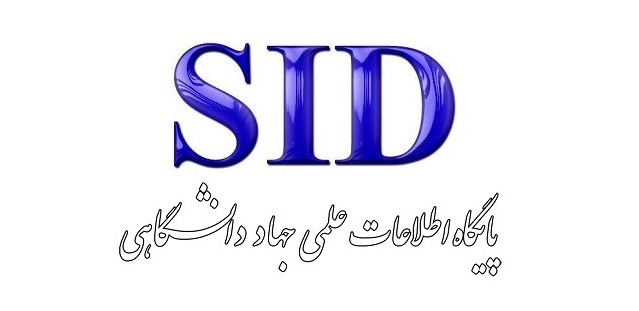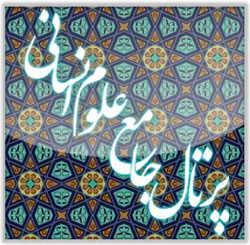بررسی تطبیقی مطالبات کنشگران عرایض جامعه روستایی کرمانشاهان در ادوار مشروطه و رضاشاه (۱۲۸۵–۱۳۲۰ش / ۱۹۰۶–۱۹۴۱م)
کلمات کلیدی:
کرمانشاهان, عریضهنویسی, مطالبات اجتماعی, جامعه روستایی, مشروطه, پهلویچکیده
عریضه از جمله اسناد تاریخی بهشمار میرود که ابعاد اجتماعی، اقتصادی، سیاسی و فرهنگی متعددی را در بر میگیرد، اما در حوزه تاریخ اجتماعی از اهمیت ویژهای برخوردار است. این نوع سند نه تنها دغدغههای روزمره مردم را بازتاب میدهد، بلکه دیدگاهها و رویکردهای اجتماعی آنان را نسبت به حاکمیتها و تغییرات سیاسی ـ اجتماعی نیز بیان میکند. به عبارت دیگر، عرایض بازتابدهنده تعاملات مردم با مردم و مردم با حکومت هستند. در تاریخ ایران، روستاها همواره از کانونهای مهم عریضهنویسی بودهاند و این ابزار برای دادخواهی، رفع تظلم و تنظیم مناسبات با حاکمیت و سایر جوامع مورد استفاده قرار میگرفته است. مقاله حاضر با هدف شناسایی و مقایسه دغدغهها و مسائل جامعه روستایی کرمانشاهان در دو دوره مشروطه و رضاشاه، بر اساس دادههای بهدستآمده از عرایض آن دورهها نگارش یافته است. این پژوهش با استفاده از روش تحلیل محتوای کیفی و تطبیقی، به بررسی، خوانش و تحلیل عرایض موجود از این دو دوره پرداخته و در پی پاسخ به این پرسش است که مطالبات کنشگران اجتماعی جامعه روستایی کرمانشاهان در این دو دوره چه بوده و چه تحولاتی را تجربه کردهاند. نتایج نشان میدهد که این مطالبات در قالب چهار مقوله اصلی اجتماعی، سیاسی، اقتصادی و فرهنگی قابل تحلیل است و در قلمرو حیات روستایی و تحت تأثیر تحولات و رویدادهای تاریخی دچار تغییر و نوسان شده است. در دوره مشروطه، عمده مطالبات سیاسی و اجتماعی حول مسائل امنیتی و رفع ظلم متمرکز بود، در حالی که در دوره رضاشاه، دغدغهها بیشتر به مسائل روزمره اجتماعی و اقتصادی و نحوه تعامل با نمایندگان و مأموران دولت مرکزی معطوف شده است.
دانلودها
مراجع
Abadian, H., & Bakhtiari, M. (2015). The Impact of Rural and Nomadic Community Relations on the Lives of Villagers in the Qajar Era. Iranian and Islamic History Research(17), 1-18.
Abdollahian, H. (2013). Conceptualizing Reality in Historical Sociology: The Absentee Landlord System in Iran. Jame'e Shenasan Publishing.
Adamiat, F., & Nategh, H. (1977). Social, Political, and Economic Ideas in the Unpublished Works of the Qajar Era. Agah Publishing.
Ashraf, A. (1974). Historical Characteristics of Urbanization in Iran during the Islamic Period. Journal Of Social Sciences(53).
Clark, C. (2015). Kermanshah: Center of the Fifth Province. Research Institute of Cultural Heritage and Tourism.
Clark, C. (2016). Kermanshah, a City in Iran. Razi University.
Coen, B. (1999). An Introduction to Sociology. Tutiya Publishing.
Darabi, H. (2014). The Culture of Kermanshah. Quarterly Journal of the General Directorate of Culture and Islamic Guidance of Kermanshah Province(3), 61-83.
Dehkhoda, A. A. (1998). Dehkhoda Dictionary (Vol. 8). University of Tehran Press.
Foran, J. (2006). Fragile Resistance: A History of Social Transformations in Iran from 1500 to 1979. Rasa Cultural Services.
Grothe, H. (1990). Grothe's Travelogue. Nashr-e Markaz.
Hesamian, F., E'Temad, G., & Ha'eri, M. R. (1984). Urbanization in Iran. Agah.
Kadivar, P. (2021). Social History of the Qajar Era. Phoenix Publications.
Karamali, A., Khazaei, S., & Rahmati, M. (2022). A Typology of Women's Protests in the Naseri Era (1847-1896). Iranian Scientific and Research Journal, 15(1, Serial 1401), 212-245. https://doi.org/10.52547/irhj.15.1.245
Karami, S., & Rahmanian, D. (2019). Private Ownership in Kermanshah (First Pahlavi Era). Journal of Iranian Local Histories, 8(1, Serial 15), 91-104.
Katouzian, M. A. (1987). The Political Economy of Iran: Despotism and Semi-Modernism 1926-1978 (Vol. 1). Papiros.
Khandabi, M. A. (2021). A Critique and Review of the Collection of Petitions during the Naseri Period. Pazhvah-e Jame'e Quarterly, 2(2), 253-276.
Komam. A series of references.
Lambton, A. K. S. (1998). Landlord and Peasant in Persia. Elmi Farhangi Publishing Company.
Laws, A. C. o. t. A., & Legislations of the Eighth Legislative, T. (1947). A Collection of the Approved Laws and Legislations of the Eighth Legislative Term. National Consultative Assembly.
Majlis, N. (1907). Majlis Newspaper.
Matani, R. (2009). The Social Conditions of Iranian Rural Society in the Qajar Era Based on Foreign Travelers' Reports. Historical Research, 11(40-41), 1-26.
Rabino, H. L. (2012). A Report on the Trade and Society of Kermanshah City and Province in the 19th Century. Razi University.
Rahmanian, D., & Karami, S. (2019). A Historical Study of the Consequences of Agricultural Commercialization in Western Iran: A Case Study of Kermanshah and Lorestan (First Pahlavi Era). Iranian History Journal after Islam, 10(20), 47-70.
Rahmanian, D., Soufi, A., Taheri Moghaddam, M., & Karami, S. (2016). The Emergence of Female Landlords in Western Iran, from the Constitutional Revolution to the End of the First Pahlavi Era. Women's Research Journal, 7(17), 47-67.
Razmara, H. A. (1943). Military Geography - Iran - Kermanshah. Army Publications Organization.
Safaei, E. (1968). The Petitions Box. Tekin Magazine(42).
Schneider, I. (2006). The petitioning system in Iran state wiesbaden, society and power relations in the late19 century. harrassowitz verlag.
Soudagar, M. (1980). The Feudal System in Iran. Pazand Publishing.
Sour Esrafil, N. (1908). Sour Esrafil Newspaper.
Talayi, Z. (2004). An Examination and Introduction of a Manuscript and Collection of Documents: "The Copybook of Complaints and Petitions from the Years 1874-1875". Ganjineh-ye Asnad(56).
Tarafdari, M. (2022). A Comparative Study of the Functions of Urban-Rural Areas in Iran from the Naseri Era to the Constitutional Revolution (1848-1906). Journal of History, Politics, and Media, 5(1, Serial 17), 35-60.
Tatari, A. (2009). An Examination of the Status of Petitions in Documentary Research. Payam-e Baharestan, 2(1, No. 4), 465-476.
Woods, M. (2011). Rural Geography. University of Tehran Press.
Yazdani, S. (2020). Rural People and Iran's Constitutional Revolution. Mahi Publications.
Yousefi Far, S., & Jangjou, S. (2014). The Position and Structure of the Kadkhoda Office in Iranian Rural Management from the Constitutional Revolution to the End of the First Pahlavi Government (1906-1941). Historical Research, Faculty of Literature, University of Isfahan, 50, 27-48.

دانلود
چاپ شده
ارسال
بازنگری
پذیرش
شماره
نوع مقاله
مجوز
حق نشر 2025 ناهید کشتمند (نویسنده مسئول); محمد امیر شیخ نوری , روح الله بهرامی , سیمین فصیحی (نویسنده)

این پروژه تحت مجوز بین المللی Creative Commons Attribution-NonCommercial 4.0 می باشد.







